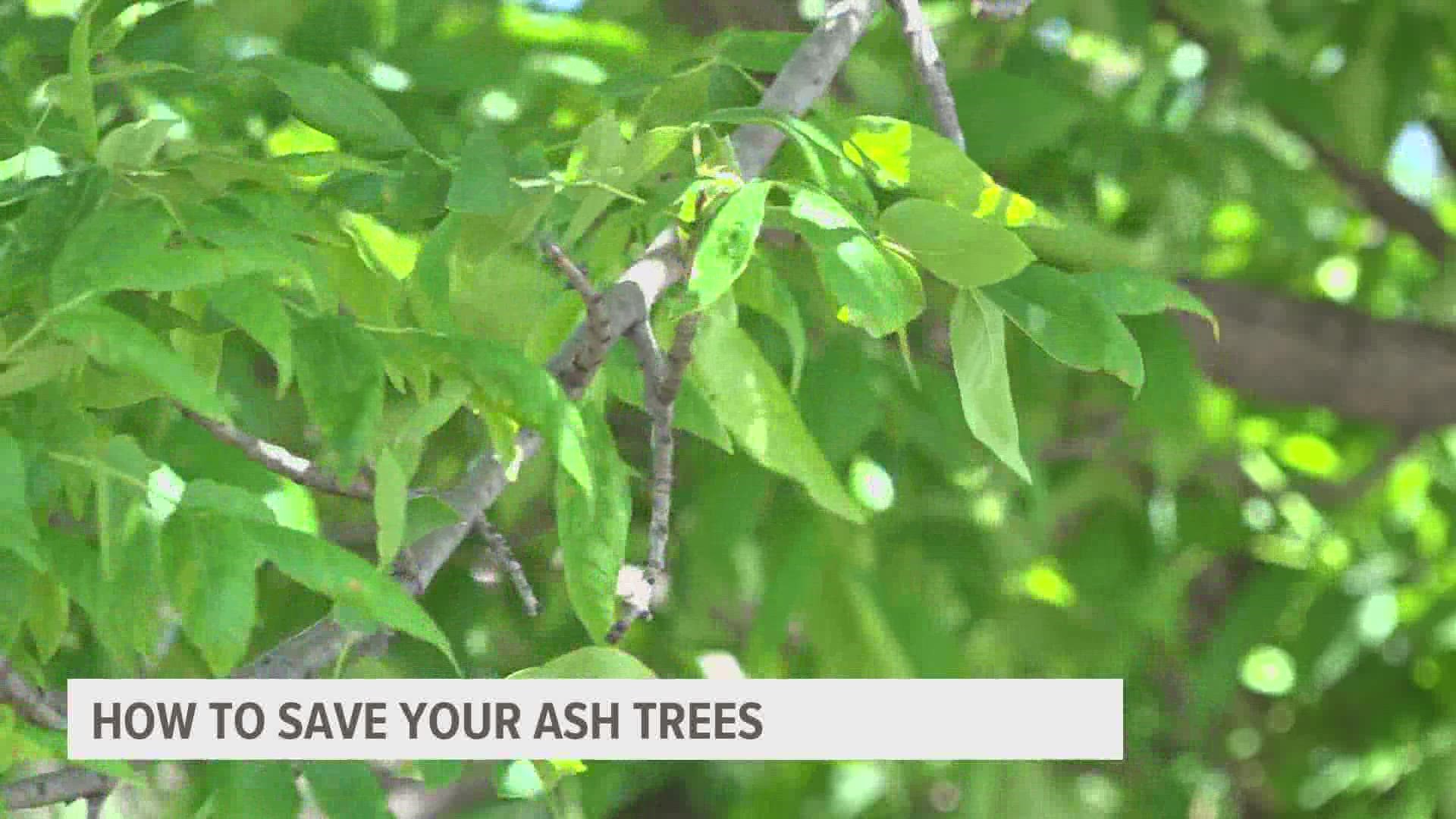IOWA, USA — Just last month, emerald ash borer was discovered in Dickinson and Humboldt counties, making those two northwest Iowa counties the latest to see the invasive insect.
The adult beetle only causes minor leaf damage, but the larvae eat away beneath the bark, disrupting water and nutrient delivery to leaves and branches.
A few years later after they arrive, typically at the top of the tree, the larvae work their way down the tree until it dies. The tree doesn't die without a fight though.
Branches will come out of the trunk of the tree near the bottom, indicating the tree is on its last gasp effort to stay alive, producing branches wherever it can.
Then, as a homeowner, you have three options:
"One option is to do nothing ... wait and see. It could be a lucky tree that escapes infestation. Your second option is to replace the ash tree with a different species. The third option is to chemically treat the tree," said Dr. Donald Lewis, a professor at Iowa State University.
Whether or not you can treat the tree before having to replace it depends on how much of it is infested.
RELATED: Invasive worm species found in Iowa
If a majority of the branches have no leaves, then you'll likely have to replace it. If only the top few branches have no leaves, chemical treatment can be the way to go.
The bigger the tree, the more likely you'll have to go to an expert to have the insecticide applied. Homeowners can apply insecticide to smaller trees, according to Lewis.
It's getting to the point of when, not if, your ash tree will see impacts.
"I don't think ash trees will go extinct, but there will likely be a lot fewer of them than what we have now," Lewis added.
He also mentioned that the rapid spread of emerald ash borer is due to manmade movement of the insects through firewood. Beetles rarely move more than a mile in their lifespan.

